Heliborne Hands-on – World of Helicopters
We’ve had tanks, warplanes, and warships, so it’s high time for helicopters. Heliborne is a multiplayer game by JetCatGames allowing you to fight 8v8 battles in helis, with an emphasis on cooperation and capturing territory.
Among all the things that can be done in shooters such as Battlefield, flying a helicopter is among the most exciting activities (in my opinion, at least); dogfights, hovering by skyscrapers, deploying your team members in the middle of a gunfight and elimination of those enemies who were unfortunate enough to find themselves in range of your TOW missiles, is good fun. However, those games don’t place a huge emphasis on helicopters, so the fans of air cavalry can find them lacking in this aspect. Heliborne, by JetCatGames, was developed with these people in mind.
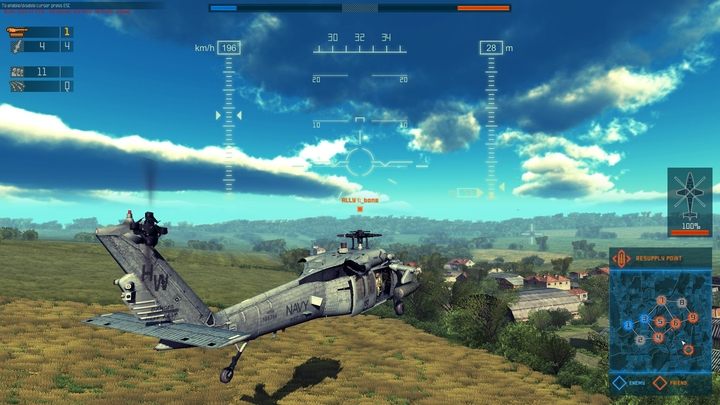
Heliborne isn’t a War Thunder clone, contrary to what you might assume judging by the screens. The game does focus on controlling air units and on the multiplayer, but it’s not a free-to-play product. For €9,99 you get a game which still is in Early Access on Steam, but there’s no grinding, microtransactions or other catches meant to drain money from your wallet. JetCatGames have based this game on three principles: great variety of helicopters, simple controls, and a unique game mode called Frontline.
The devs have given us 37 Russian/Soviet, American, and French machines, divided into four generations – each renders a different historical period, and different level of technical advancement – there are Cobras flying over Vietnam, and not Apache and this works well for the atmosphere. Although the helicopters, and their variants, have their bigger and smaller differences in stats, they are all divided into three classes: scout, transport, and attack. The scouts are designed to provide information about the movement of enemies; they’re quick and agile, hard to hit, and troublesome as hornets. The attack helis are doomsday chariots – their main task is combat. They are obviously the favorite pick of almost every player, so it often happens that one team captures 90% of the map, and there’s no one trying to recap on the other side. The transport helicopters – well armored, but slow and ponderous – are the key to success. The troops carried in these choppers are able to capture strategic points on the map. There are some more delicate machines that manage to go outside the box, such as Mi-24 Hind, for example, which (as in reality) combines the features of transport and attack helicopters.
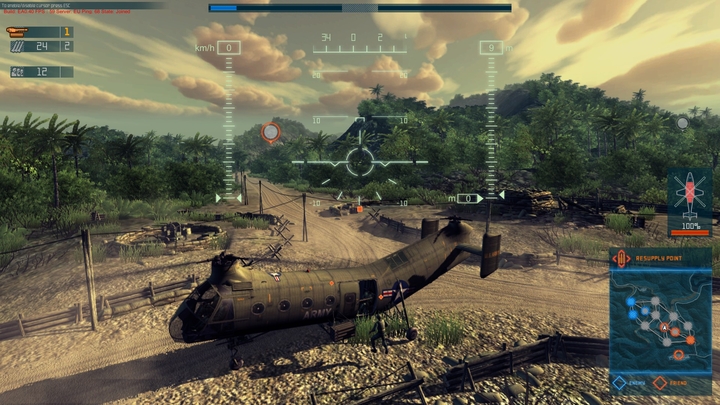
Capturing points on the maps in the right order is the focal point of the Frontline mode. Some inspiration with MOBA is apparent here: captured points are soon reinforced by AI-controlled tanks and anti-aircraft units. Destroying them is a nice diversion from fighting other players. Deploying troops is one of the most interesting elements of this game – it can be used for capturing points or setting ambushes (if those are anti-air or anti-tank units). 16 players tops can play on one server, so the cooperation has to be tight... and so we’ve stumbled upon the main disadvantage of this game’s early access: it’s hard to find a server filled with players.
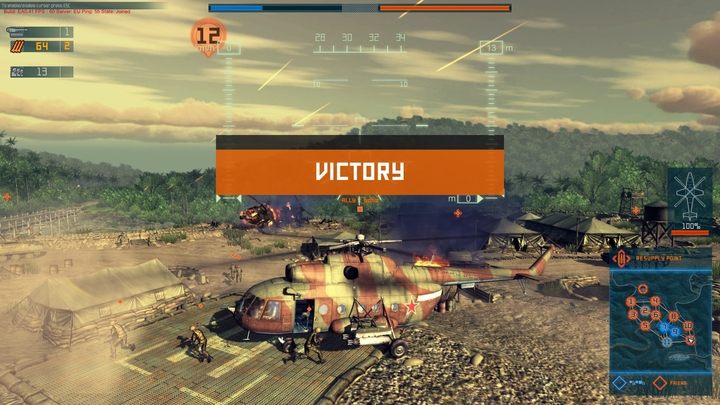
Controlling the helicopters, even with mouse and keyboard, is super easy; you could say they fly themselves. Flying is even easier than in Battlefield 4 or Arma III, which has a rather negative impact on the immersion during dogfights. We don’t have to struggle in order to tame the machine, and despite the differences in acceleration or agility, all of them lack character. The developers, however, are planning to implement realistic flight mechanics with one of the upcoming updates, which will allow maneuvers such as autorotation, for example. To sum up, Heliborne has no interest in becoming a simulator, so there’s no need to worry about such phenomena as vortex ring state.
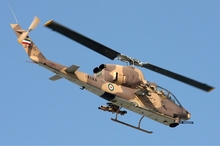
Air-to-air combat between helicopters doesn’t happen often. The greatest amount of, rather unfair, dogfights have taken place during the war between Iraq and Iran, at the beginning of the 80s. Iranian SeaCobras, made in the USA, clashed with Soviet Mi-24s belonging to Iraq. Initially, the SeaCobras did a bit better, grounding many Iraqi Mis with anti-armor TOW missiles. The Iranians, however, managed to take their revenge in latter stages of the war. Ultimately, 10 Mi-24s and 6 AH-1Js have been shot down.
The dogfights are a problematic matter – they often boil down to two machines trying to get elevation advantage, firing everything they can in the meantime – unguided missiles included. And in regard to the damage system – one of the most important elements in a game about mechanized combat, currently is painfully simple. The choppers have their health at 100%; if they’re hit, the health decreases until the entire armor is shattered, the health reaches 0, and the machine explodes. There’s no possibility to lose a gunner, for example, or damage one of the engines or weapon systems. Heliborne lacks depth in this aspect. I remember landing on a single engine in a simulator, DCS: Black Shark, as one of the most exciting events I’ve experienced in games. There’s nothing like that here, not even in an arcade form.
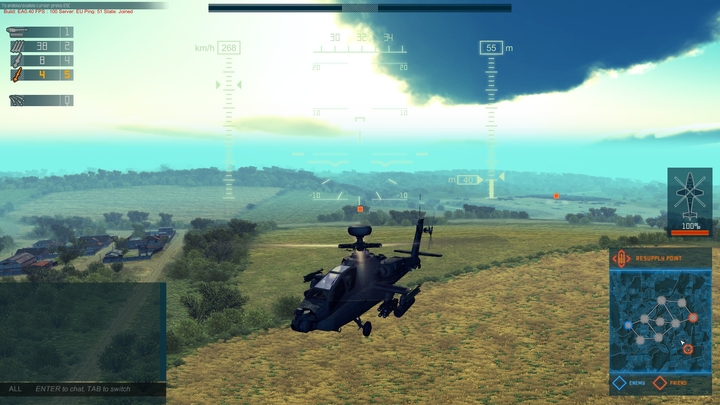
In terms of graphics, the game is very uneven: decent helicopter models and textures don’t make up for the limited field of view. Even if the option is set of “far”, the area is still surrounded by fog, which is especially flagrant on higher altitudes. That’s too bad, since the maps themselves are rather good, with their own flavor. Flying over jungles of Vietnam or hills and mountains of Afghanistan creates a nice mood for such a game. The audio is outstandingly poor – the explosions take us for a hypnotic time travel back into late 90s – the dominium of the WAV format.
Heliborne’s Early Access is precisely that – early access. But not in a negative way; the game has received three major updates in June. There’s no arguing that the road before the developers is long and rocky, but what we already have can serve as a decent base for something more. More complex flight mechanics, matchmaking, appropriate balance, skill trees awarding players for completing games – those are the elements that Heliborne needs if it wants to become a good game. If JetCatGames will keep pouring so much work into their product, the potential may be finally fulfilled, rewarding the devs with a much bigger community of enthusiasts of aerial combat gathering around Heliborne.
